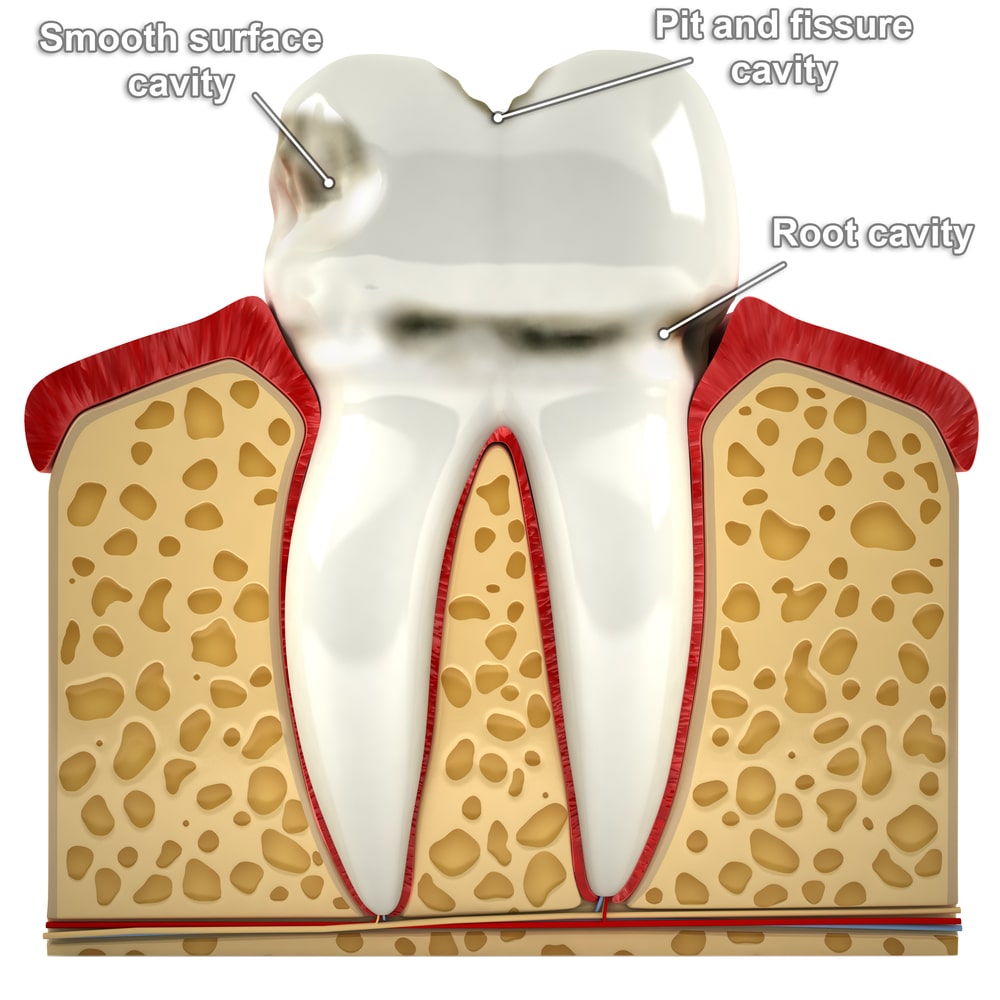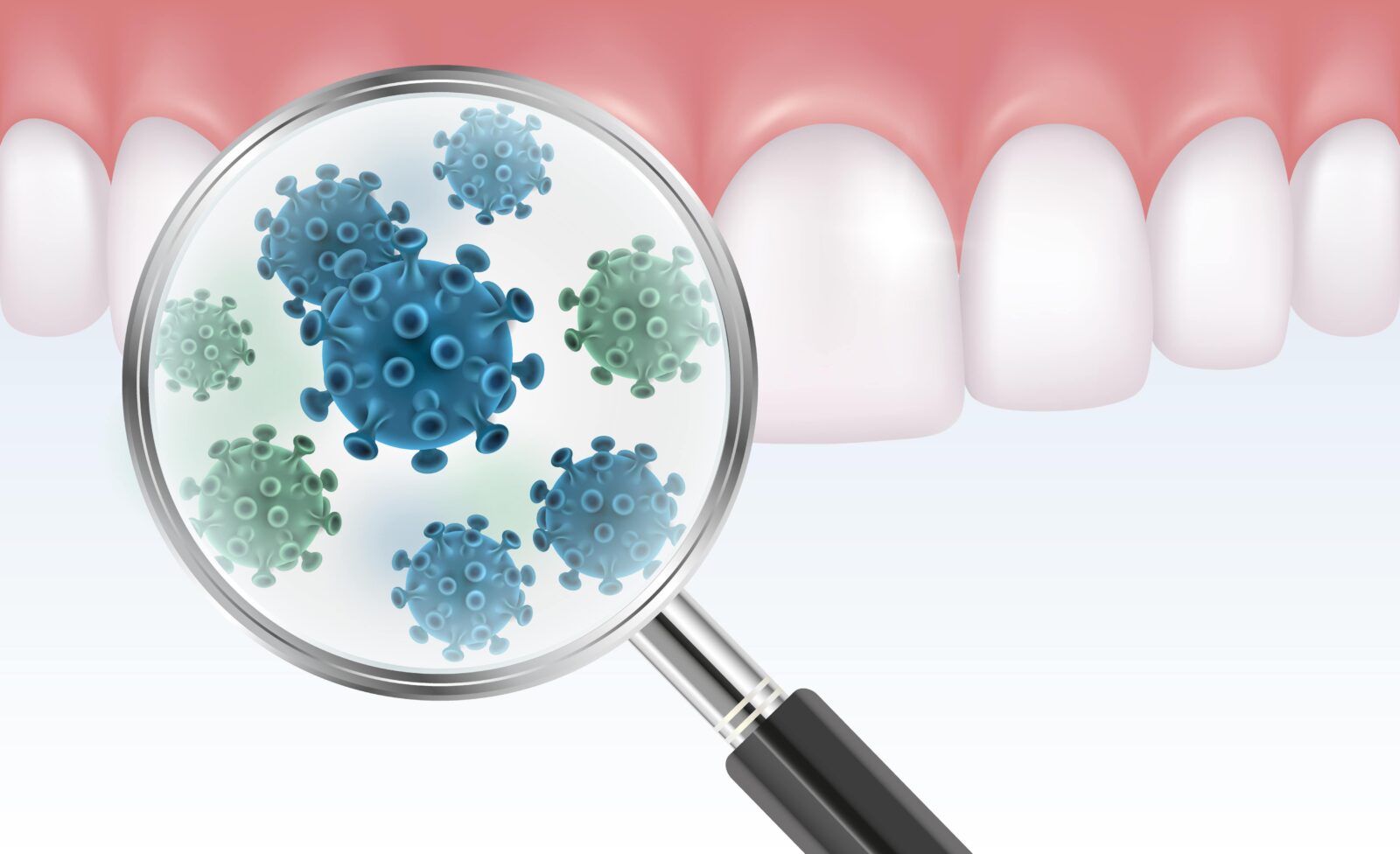Cavities are one of the most common threats to your oral health. In fact, according to the Canadian Health Measures Survey, around 96% of adults have experienced a cavity at some point in their lifetime. The survey also notes that 57% of 6-11 year olds and 59% of 12-19 year olds have or have had at least one cavity. Unfortunately these numbers show just how prevalent cavities are among the general population.
Despite the fact that cavities are so common, they are also preventable. A large part of preventing cavities, however, is first having an understanding of what they are and how they form. Once you have a better understanding about cavities, then you can take the necessary steps to help prevent them.
What is a Cavity?
The word “cavity” comes from the latin word “cavus” meaning “hollow or concave”. Therefore, a dental cavity is a hole in the tooth. These holes can form in the tooth when bacteria cause parts of the tooth to decay (more about this later). There are different types of cavities, depending where on the tooth they form. These include:

Pit and fissure cavities
Pit and fissure cavities are one of the most common types of cavities. This type of cavity forms in the crevices of the highly textured molar chewing surface. They earned their name since the textured surface is composed of pits and fissures. This is a common location for cavities due to the fact that it is difficult to properly clean this surface, making it an ideal location for bacteria to accumulate.
Root cavities
Root cavities are also somewhat common, especially in people with gum recession. Since the tooth roots are normally protected below the gum tissue, they do not have as much enamel as the rest of the tooth. This means that when the gums recede and expose the tooth roots, it is much easier for bacteria to attack the tooth surface and form a cavity.
Smooth surface cavities
The final type of cavities are smooth surface cavities. Like the name suggests, this type of cavity forms on the smooth surfaces of the tooth. They can be found on front teeth, as well as on the sides of back teeth. Unlike the other two types of cavities, smooth surface cavities are not as common since regular brushing usually prevents bacteria from accumulating on the smooth surfaces.
How do cavities form?
Now that we know more about what a cavity is and where they can form on the teeth, let’s take a deeper look at how cavities form. As mentioned before, cavities form when bacteria cause parts of the tooth to decay. The human mouth contains thousands of naturally-occurring bacteria. While most of these bacteria are beneficial, there are certain types of bacteria that can cause problems when their population grows.

It is important to note that decay-causing bacteria are living organisms. This means that they consume food, produce waste, and can reproduce. Bacteria feed on the sugars found in the foods and beverages you consume. Bacteria that are well-fed are also able to reproduce and create more bacteria. After feeding, bacteria will also produce waste that is deposited onto the surface of the teeth. The more bacteria, the more waste produced.
Unfortunately, the waste product produced by bacteria is acidic, which can break down tooth enamel. This means that large amounts of acidic waste in one area can erode the enamel, causing a hole to form. This hole, or cavity, will continue to grow as more acidic waste is deposited and more tooth structure is eroded.
Still, cavities don’t form instantaneously and they do take awhile to develop. However, there are certain places in the mouth that are harder to reach than others, such as between the teeth. Unfortunately, these hard to reach areas are some of the most common locations for cavities since large amounts of bacteria accumulate and remain undisturbed for extended periods of time.
How to Prevent Cavities
The best way to prevent cavities is to keep your mouth as clean as possible. Brushing twice a day removes plaque and bacteria from the surface of your teeth, while flossing daily removes bacteria from the hard to reach areas. Using a fluoridated toothpaste also helps to strengthen your enamel and makes it harder for bacteria to accumulate. Finally, visiting your dentist twice a year for a professional teeth cleaning ensures that every single tooth is cleaned and treated to decrease the risk of decay.





